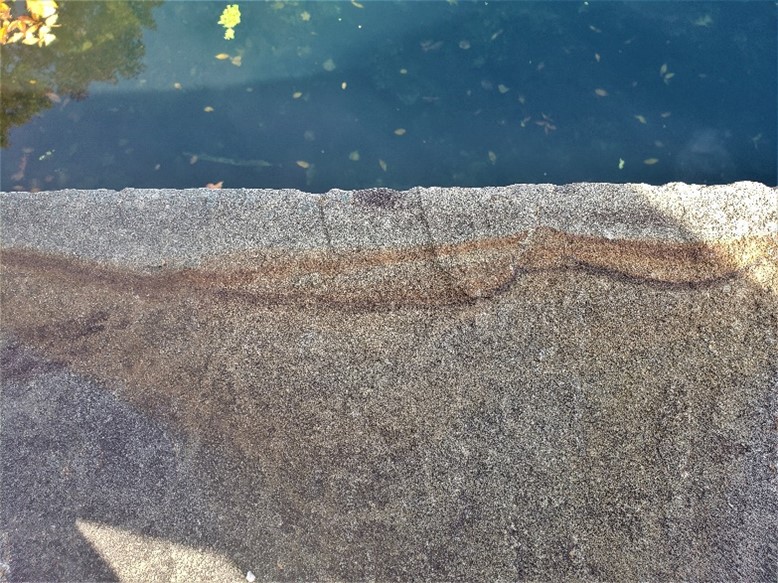THE CATSKILL GEOLOGISTS BY PROFESSORS ROBERT AND JOHANNA TITUS
Chemical weathering at Opus 40
This week we at last bring to an end our series of columns about the quarry at Opus 40, near Woodstock. We have spent a lot of time wandering the grounds at Opus 40 and we have seen a lot of things. So much of that required a trained eye. Take a look at our photo. It shows something that we have written about before so your eyes may already be trained to see what we saw. We were looking at a shelf of rock in the northeast corner of the quarry. That makes up most of our photo. Above is the blue of a pool of water. We liked that ledge; it kept us busy looking at it. We found a lot of trace fossil burrows there. You can just make out some of them in this week’s photo, especially in the lower left. If you look carefully, you will see some reddish-brown and yellow stripes that roughly parallel a fracture at the edge of the ledge. We saw the same thing in that earlier column, our January 3rd, 2021, column. (You clip and save all these columns, right?) Back then, we described similar stripes on a similar rock. We had surmised that this rock had been fractured sometime in the distant past. Water had soaked into the fracture and that water carried dissolved iron with it. Iron can be chemically active, especially in its interactions with water. What happened is that, probably during a drought, that water evaporated. As the rock, itself, dried out, the iron reacted chemically with the remaining water and formed some tiny crystals of iron oxides. The orange and yellow ones were composed of the mineral limonite and the brown ones were goethite. That’s how those stripes formed. During the years when Opus 40 was an active bluestone quarry, the layers of rock above that fracture were peeled away. That’s when the stripes came to be exposed.
Well, we have told this story before and only bring it up again because of the new context – this chemical weathering is in the Opus 40 quarry. But it only makes sense for us to try to add more to the story. We pondered this for a while and then we did come up with a new “angle.” It has to do with how those fractures opened up in order to let that water into the rock.
We have to understand that these strata were once lying beneath thousands of feet of more rock. The weight of this overburden was enormous. It compressed the rock. That was more than 300 million years ago. Throughout all of that time that has since passed, those rocks have been very slowly weathering and then eroding away. Over the vastness of that time all that rock above Opus has slowly disappeared. It mostly and literally has dissolved. As the Opus strata were approaching the surface, the rock expanded, their fractures opened up, the water soaked in, and the crystals formed. Contact the authors at randjtitus@prodigy.net. Join their Facebook page “The Catskill Geologist.” Read their blogs at “thecatskillgeologist.com.”

